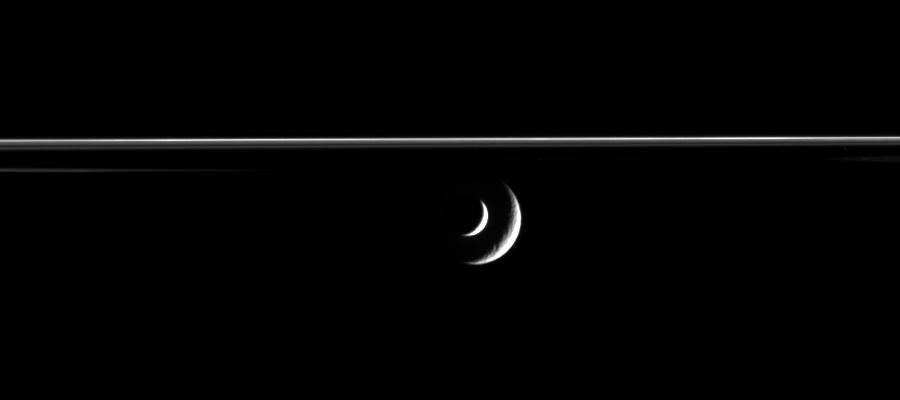Enceladus Transits Rhea

| PIA Number | PIA08350 |
|---|---|
| Language |
|
The bright crescent of Saturn's moon Enceladus slides past distant Rhea in this mutual event, or occultation, movie from Cassini.
The movie was created from 40 original images taken over the course of about 20 minutes as the spacecraft's narrow angle camera remained pointed toward Enceladus. Additional frames were inserted between the 40 Cassini images to smooth the appearance of the moons' movement--a scheme called interpolation.
As Enceladus (505 kilometers, or 314 miles across) approaches Rhea (1,528 kilometers, or 949 miles across), the shadow of Saturn can be seen, projected onto the unlit side of its incredible rings.
The images were taken in visible light with the Cassini spacecraft narrow-angle camera on March 2, 2006, at a distance of approximately 2.8 million kilometers (1.7 million miles) from Rhea and 2 million kilometers (1.2 million miles) from Enceladus. Image scale is 17 kilometers (11 miles) per pixel on Rhea and 12 kilometers (7 miles) per pixel on Enceladus.
The Cassini-Huygens mission is a cooperative project of NASA, the European Space Agency and the Italian Space Agency. The Jet Propulsion Laboratory, a division of the California Institute of Technology in Pasadena, manages the mission for NASA's Science Mission Directorate, Washington, D.C. The Cassini orbiter and its two onboard cameras were designed, developed and assembled at JPL. The imaging operations center is based at the Space Science Institute in Boulder, Colo.
For more information about the Cassini-Huygens mission visit http://saturn.jpl.nasa.gov . The Cassini imaging team homepage is at http://ciclops.org .
Credit: NASA/JPL/Space Science Institute
